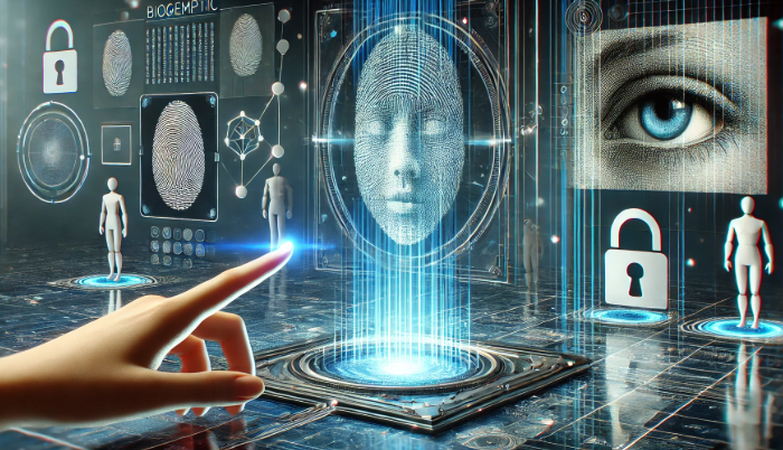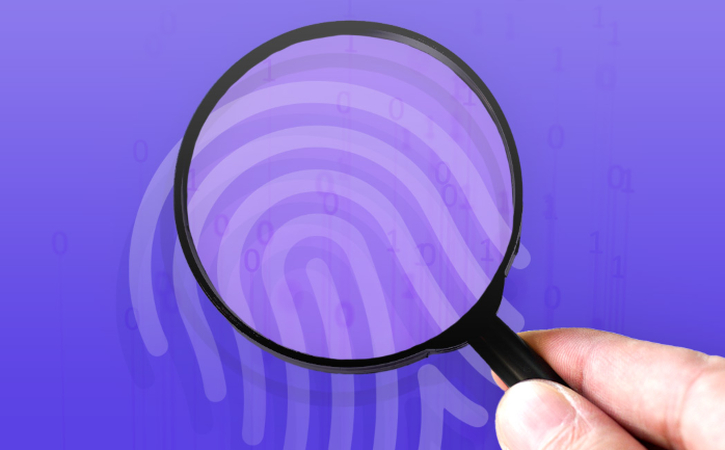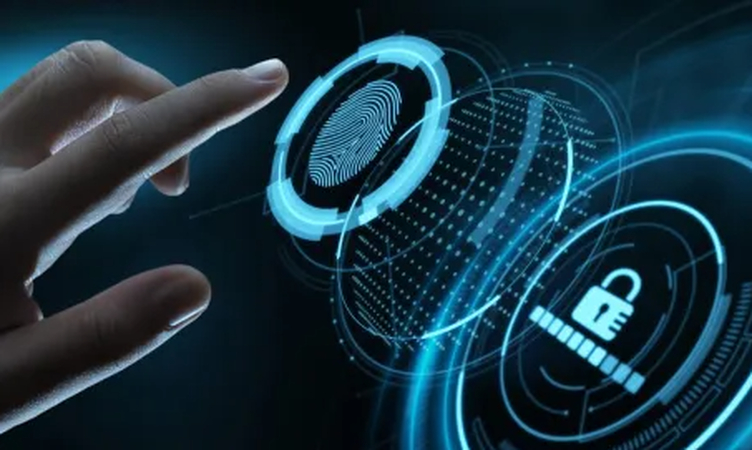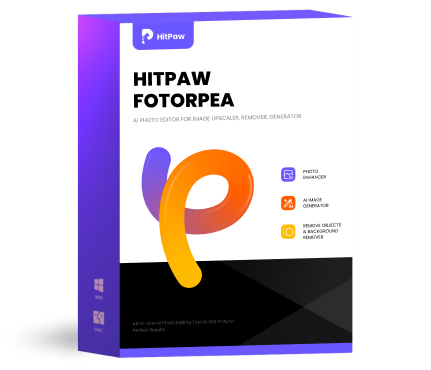Risks of Using AI in Non-Prohibited Biometric Identification Systems
As artificial intelligence becomes more sophisticated, one of its most controversial yet widely adopted applications is biometric identification-using fingerprints, facial features, iris scans, or voiceprints to identify individuals. Under the EU AI Act, these technologies are often considered high-risk, especially when deployed in public or sensitive settings.
This article explores how AI is currently being used in these legal biometric systems, the risks they pose, how users can mitigate those risks, and how tools like HitPaw VikPea can be safely used for lawful video enhancement outside of biometric analysis.

Part 1: Understanding AI in Biometric Systems Under the EU AI Act
The EU AI Act is the world's first comprehensive regulation specifically addressing artificial intelligence. It categorizes AI systems based on their intended use and associated risk. Among the most sensitive of these are biometric systems used to identify individuals based on physical or behavioral characteristics.
Crucially, the Act draws a line between prohibited and permitted but high-risk applications:
- 1. Prohibited uses include real-time remote biometric identification in public spaces by law enforcement, predictive policing based on behavioral data, and social scoring systems.
- 2. Permitted high-risk uses may include:
- Facial recognition for access control at corporate buildings or airports
- Voice authentication in call centers and banking apps
- Fingerprint or iris-based logins for secure devices
- Biometric screening at border control under specific safeguards
While these applications are not banned outright, their high-risk classification means that providers must undergo conformity assessments and follow strict obligations regarding transparency, accountability, and fairness.
These systems must also comply with the General Data Protection Regulation (GDPR) when they process personal data-particularly biometric data, which is categorized as sensitive personal information.
Part 2: How AI Is Used in Non-Prohibited Biometric Systems

Biometric technologies are now used across industries-from healthcare and banking to education and workforce management. Thanks to AI, these systems can function at a scale and speed that traditional methods never could. Importantly, many of these implementations are entirely legal within the EU, provided they follow regulatory frameworks.
In smart buildings and offices, facial recognition can automate secure entry for authorized employees. In customer service, voiceprint authentication allows users to verify their identity without typing passwords or answering security questions. In border control, AI-enhanced fingerprint and iris scanners accelerate immigration processing.
Ai-Driven Systems Offer Several Benefits
- Speed: AI allows for near-instantaneous verification, improving efficiency.
- Accuracy: Machine learning models can outperform traditional recognition methods in reducing false acceptances or denials.
- Convenience: Biometric systems offer touch-free interactions, ideal in post-pandemic environments.
- Cost Savings: AI automates identity management at scale, reducing labor needs.
Nevertheless, the convenience comes with a price. As these systems grow in sophistication, so do the implications of their misuse, error, or bias.
Part 3: Key Risks in Non-Prohibited AI-Driven Biometric Systems
Despite being legally deployable, high-risk biometric systems powered by AI bring a host of risks that organizations must not overlook. These risks are both technical and ethical, and their consequences can be severe-from discrimination and surveillance to reputational damage and regulatory penalties.

- 1. Bias and Discrimination:Many AI models are trained on datasets that are not demographically representative. As a result, face or voice recognition systems may be significantly less accurate for women, minorities, or individuals with disabilities. Misidentification can lead to unjust denial of access or services, causing harm to individuals and legal liability for organizations.
- 2. Privacy Invasion:Even with consent, the use of biometric data raises profound privacy concerns. A fingerprint or iris pattern, once leaked, cannot be revoked like a password. Improper data handling or long-term storage creates permanent risk.
- 3. Function Creep:Biometric systems installed for one purpose (e.g., time-tracking in the workplace) may gradually be expanded to monitor behavior or productivity, without obtaining fresh consent or conducting new risk assessments.
- 4. Cybersecurity Threats:Centralized biometric databases are attractive targets for hackers. Breaches could lead to stolen identities, blackmail, or national security threats in extreme cases.
- 5. Opacity of AI Decision-Making:Many biometric AI systems are "black boxes," offering no explanation for why a person was denied access or flagged. This lack of transparency undermines trust and accountability.
Part 4: How to Mitigate Risks and Act Legally

The EU AI Act and GDPR offer a framework-but it's up to organizations to implement best practices that align with these legal standards while also upholding ethical responsibility. Whether you are a developer, system integrator, or end-user, the following steps are crucial:
1. Conduct a Data Protection Impact Assessment (DPIA)
This is mandatory for any system processing biometric data. The DPIA must evaluate the potential impact on individual rights and identify risk mitigation strategies.
2. Ensure Transparency and Explainability
Design systems that allow users to understand and challenge biometric decisions. Offer plain-language explanations and provide recourse mechanisms.
3. Limit Data Collection
Use only what is strictly necessary. Avoid storing raw biometric data whenever possible-opt for hashed or encrypted representations instead.
4. Secure the Data
Implement end-to-end encryption, secure storage, and role-based access controls to protect biometric databases from breaches.
5. Test for Fairness and Accuracy
Audit systems regularly to ensure they perform equally well across demographics. Retrain models with more representative datasets if disparities are found.
6. Stay Informed and Compliant
Keep up with EU-wide guidelines, national enforcement practices, and new technical standards such as ISO/IEC 23894 for AI risk management.
Bonus: How to Use AI Video Enhancement Legally and Responsibly
While biometric AI systems face heavy regulation, not all AI applications do. Tools like HitPaw VikPea represent a legal, ethical use of AI in the video domain, specifically for non-identifying, content-level enhancement.
What Makes HitPaw AI Video Enhancer Stand Out
- Video Repair: Recover lost frames or improve corrupted segments
- Resolution Enhancement: Upscale blurry or old footage to HD or 4K
- Noise Reduction: Clean visual noise for better viewing quality
- BG Removal: Fast and smooth video background removal & replacement
- Video Colorize: Colorize black and white video with advanced color grading feature
Importantly
HitPaw VikPea does not perform facial recognition, biometric matching, or identity inference. This makes it fully compliant for use in environments where content quality matters, but legal boundaries must be respected.
Part 6: Common Questions About AI in Biometric Systems
Q1. Are all biometric AI systems prohibited in the EU?
A1. No. Only certain applications, such as real-time public facial surveillance by authorities, are banned. Many others are legal but classified as high-risk.
Q2. Is using facial recognition in the workplace allowed?
A2. Yes, under strict conditions including employee consent, purpose limitation, and full GDPR compliance.
Q3. What's the difference between biometric AI and general video enhancement AI?
A3. Biometric AI involves identifying people based on biological traits. General enhancement AI (like HitPaw VikPea) improves video clarity or quality but does not identify or classify individuals.
Q4. What is function creep and why is it dangerous?
A4. Function creep occurs when a system designed for one purpose (like access control) is used for another (like behavior monitoring) without updated consent or assessment.
Q5. What are the penalties for misusing biometric AI in the EU?
A5. Non-compliance with the EU AI Act and GDPR can result in heavy fines, up to €35 million or 7% of global turnover, and reputational damage.
Conclusion: Balance Innovation with Responsibility in Biometric AI
AI-powered biometric systems offer unmatched convenience, but also come with high regulatory and ethical responsibility. While non-prohibited systems can be legally used, they must be handled with care, transparency, and a deep understanding of both technical risks and legal obligations.
For professionals seeking legal ways to enhance visual content in surveillance, education, or corporate training-HitPaw VikPea provides a powerful and compliant solution for non-biometric AI video enhancement. It allows users to benefit from AI's power without entering high-risk legal territory.










 HitPaw Univd (Video Converter)
HitPaw Univd (Video Converter) HitPaw VoicePea
HitPaw VoicePea  HitPaw FotorPea
HitPaw FotorPea



Share this article:
Select the product rating:
Daniel Walker
Editor-in-Chief
This post was written by Editor Daniel Walker whose passion lies in bridging the gap between cutting-edge technology and everyday creativity. The content he created inspires the audience to embrace digital tools confidently.
View all ArticlesLeave a Comment
Create your review for HitPaw articles